What The Heck Is Matcha?
Matcha is turning up everywhere, in lattes, energy drinks and baked goods. We tell you what it is exactly, and why everyone is talking about it.
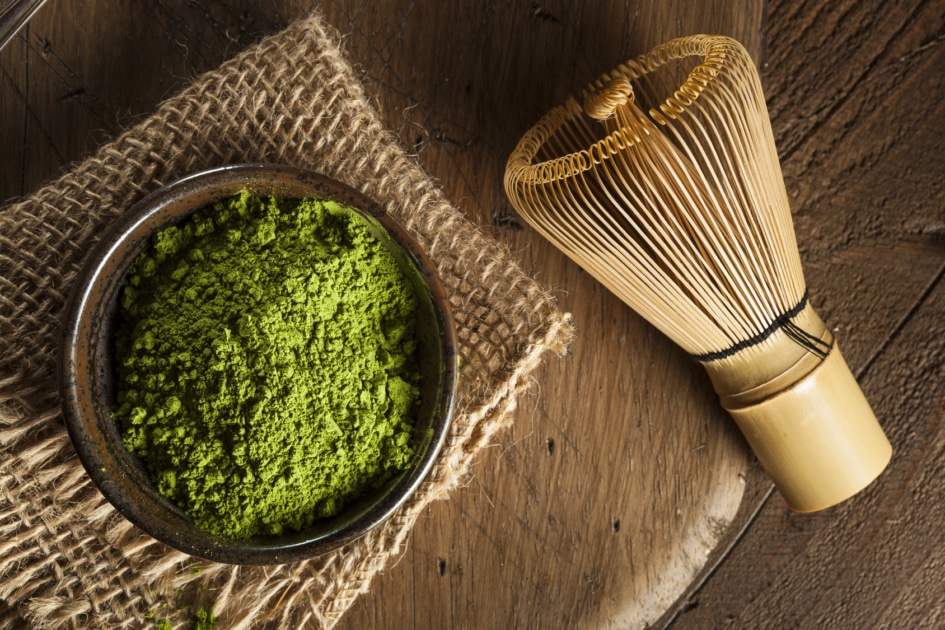
Rather than turn to that cup of coffee or sugary snack for your afternoon pick-me-up, why not try a cup of matcha?
What is Matcha?
Matcha is, simply, finely powdered green tea from specially-grown tea leaves. It has found its way into specialty drinks, recipes, health preparations, and even cosmetics. For years now, green tea has been valued for its antioxidant properties, but this new variation is gaining in popularity because of its distinctive flavor and many health properties.
Many of us have read about the benefits of green tea because of its itsepigallocatechin gallate content—or EGCG—a phytochemical compound that acts as a powerful antioxidant to fight cancer, viruses, and heart disease. According to a study published in the Journal of Chromatography A, matcha has three times more EGCG than regular green tea.
Espresso is to coffee what matcha is to green tea. Stronger, thicker, more concentrated, matcha is more of a suspension than a brew. It does contain a fair amount of caffeine, but the jolt is balanced by the presence of an amino acid called L-theanine, causing most drinkers report a “calm alert” sensation rather than any coffee-like jumpiness.
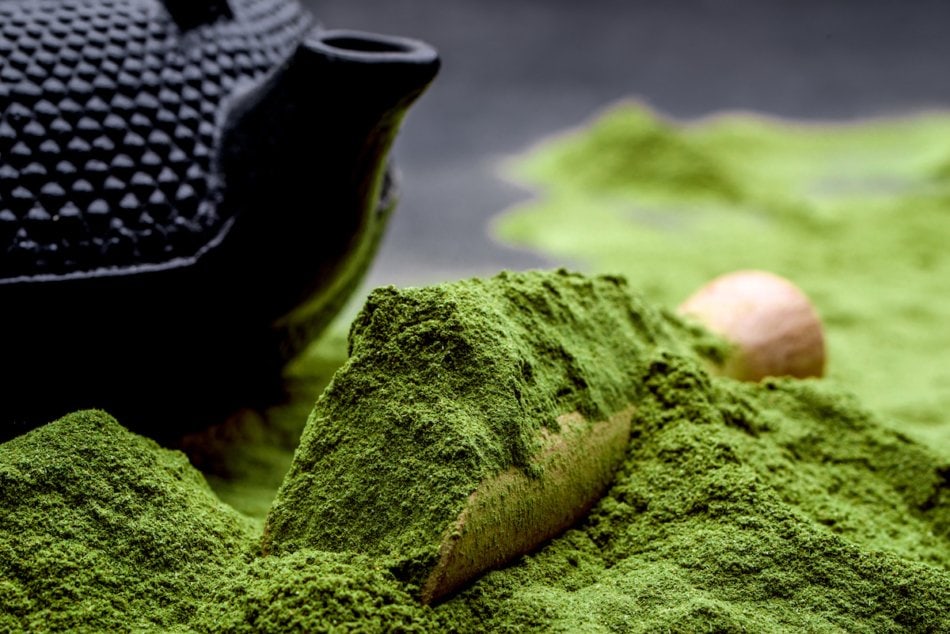
Matcha History
To understand why matcha has become so popular, we need to go back to its roots in 12th century Japan, and the development of the Japanese tea ceremony. The tea ceremony is a defining cultural tradition in Japan, where the simple act of making and serving a humble cup of hot tea, one person to another, evolved into a highly ritualized confluence of beverage, art, manners, and social interaction.
Every moment, gesture and action is imbued with rich tradition and meaning. It is said that no two tea ceremonies are the same. Each is celebrated based on a myriad of variables, from the season the tea is served, to the particular character of the participants, their costume, the design of the cups and implements, and culminating with the smooth, graceful dance-like actions of the server and the drinkers.
Types of Matcha
Two types of matcha may be prepared in a tea ceremony. Thick, known as koicha, and thin, known as usucha. The finest and most expensive grades are generally reserved for koicha. Premium matcha powder results in a tea with a rich, intense flavor and a nuanced sweetness. The tea is specially grown in shade, and some days or weeks before harvest, the plants are covered to further increase chlorophyll production, resulting in a vibrantly green product. Unlike regular green tea for brewing, only the leaves are dried and ground to a powder to make matcha—the stems are carefully removed.
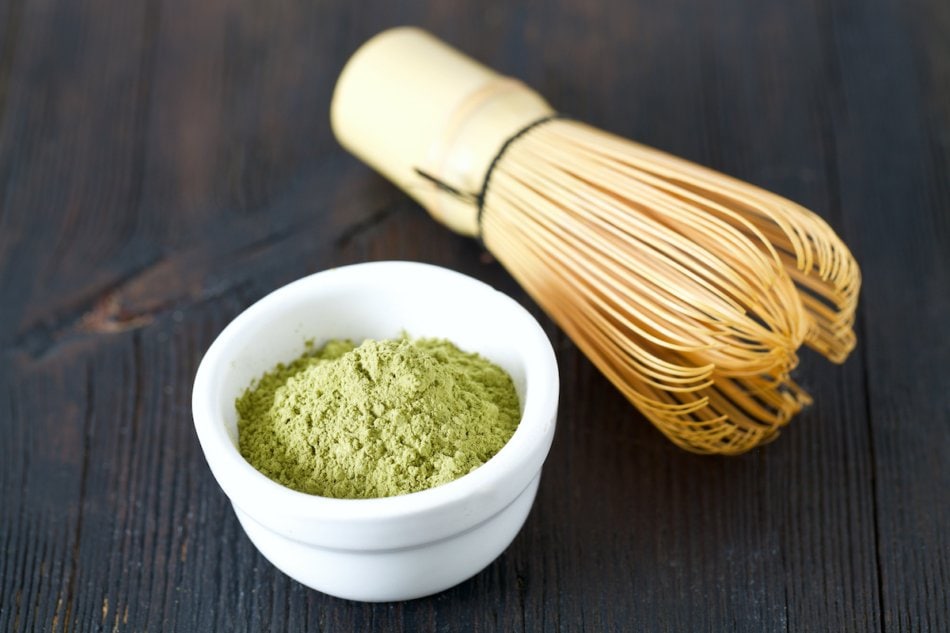
How To Make Matcha
To prepare this drink in the traditional way, a few pieces of equipment are necessary. The most important is the chasen, or whisk, which is crafted from specially selected inward-curving bamboo filaments set in a handle somewhat resembling a shaving brush. A special wooden scoop known as a chashaku, portions out the powder into a tea bowl, known as the chawan.
Before use, matcha is usually forced through a fine sieve with a wooden implement to remove any lumps which frequently develop in storage caused by moisture in the air. The sifted product is then stored in a special caddy (chaki), usually covered with a lid.
For thin style, usucha: one or two scoops of matcha (1-2 teaspoons) is placed in the chawan (pre-warm it with hot water and pour out), and 2 ounces of hot water is added. The water should be about 170°F, just under boiling. The mixture is then wisked vigorously with the chasen in a back-and-forth, zig-zag motion until frothy and well blended. There should be no lumps, or residue of powder on the sides of the bowl.
For thick style, koicha: add 3-4 scoops of matcha to the prewarmed bowl, add slightly less water (1.5 oz.) and slowly whisk left to right, up and down. With koicha, you are more “kneading” the tea into the water, rather than trying to develop froth. Perfect koicha should be smooth, thick, and froth-free.
Drink immediately after whisking.
The sky is the limit these days with respect to enjoying matcha. If you can’t be bothered with all the formalities, you can still enjoy this drink without heading to the nearest Asian supermarket: more and more supermarkets are carrying it so you can make it easily at home.
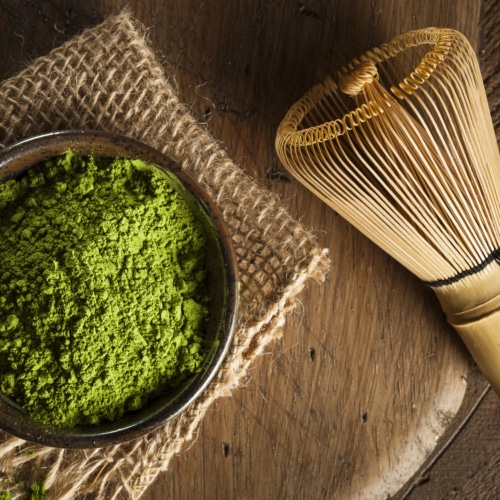
Honey Almond Matcha Latte
Ingredients
- 1 cup unsweetened almond milk (original or vanilla)
- ¼ cup prepared matcha (thin), hot
- honey to taste
Instructions
- Heat almond milk in a small saucepan over medium heat until just simmering, stir in honey.
- Prepare matcha usucha style, by adding 1-2 tsp matcha powder to a large cup and adding 2 oz. hot water.
- Whisk to blend and develop froth.
- Whisk in hot almond milk and serve.
- If you have a milk frother, by all means use it if you’d like extra froth.
- Garnish with a slight sprinkle of matcha powder.
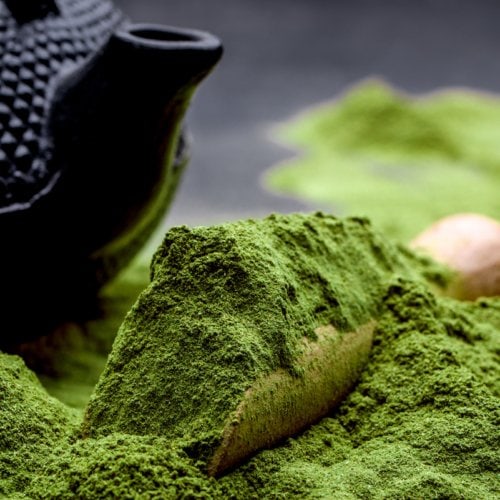
Matcha Pistachio Bark
Ingredients
- 1 bag white chocolate chips
- 1-2 tsp matcha powder
- ½ cup shelled pistachios
- few drops almond extract
Instructions
- Place white chocolate chips in a glass bowl, and microwave on high in 20-second intervals, stirring between intervals, until melted. Do not overheat.
- Stir matcha powder and extract into melted chocolate, use enough matcha to make a nice green color.
- Add pistachios and mix.
- Working quickly, turn mixture out onto a sheet pan lined with parchment paper and sprayed lightly with cooking spray.
- Spread mixture out to about 3/8” thickness and refrigerate until the bark hardens.
- Break into pieces and serve.

Edward Higgins
Edward Higgins is a freelance writer, artist, home chef, and avid fly fisherman who lives outside of Portland, Maine. He studied at Skidmore College and Harvard University. His article 10 Best Edible Insects appears in the 2020 Farmers' Almanac.






I just discovered some Matcha in a pack yesterday. You can use it on the go, just pour in a bottle of water and shake. I was extremely pleased with the taste….this is saying a lot coming from a hardcore southern sweet tea drinker. Mixes such as this usually disgust me, but I think I have found a wonderful new tea experience. Thank you for sharing the benefits.